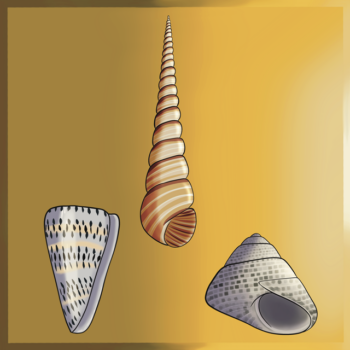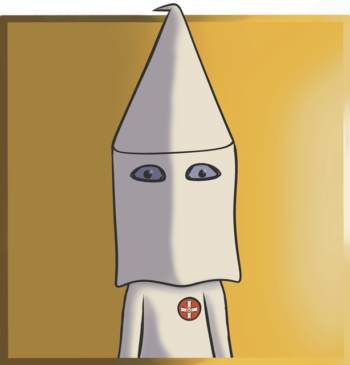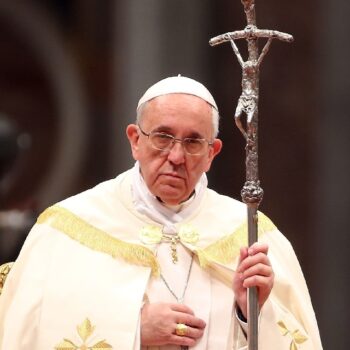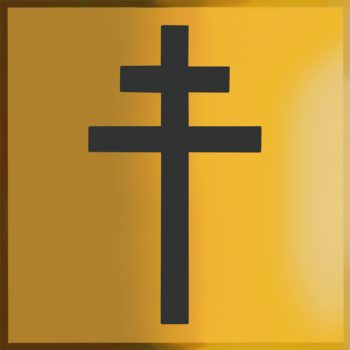Definition:
The number “1” is the first and smallest natural number. It represents a unit, a single entity, or a quantity of one. In arithmetic, 1 serves as the multiplicative identity, meaning that any number multiplied by 1 remains unchanged.
Etymology:
The etymology of the number “1” traces back to Proto-Indo-European roots. The word “one” in English and its equivalents in many other languages can be traced back to the Proto-Indo-European root “*óynos,” which meant “one” or “alone.” This root evolved into various forms in different Indo-European languages, leading to words such as “unus” in Latin, “eins” in Old High German, “en” in Old Norse, and “ān” in Old English.
Description:
Unlike the number “0“, which symbolizes non-existence, it is ingrained in the language we have been taught that one is the opposite of zero. The Law of Unity is a theology that claims that everything is one. And we can easily observe that this theology is widely spread in language by, for example, having a whole range of Norwegian synonyms for existence ending with the suffix -en to indicate that the word describes a unity. Such as “helheten” meaning “the whole,” “virkeligheten” meaning “reality,” “realiteten” meaning “reality” or “actuality,” “sannheten” meaning “truth,” “verden” meaning “the world,” and “naturen” meaning “nature.” The same goes for a lot of the English words that are imitating the word existence as they’re ending with the suffix -ty, as “ty” is a symbolic representation of God.
Even though it is evident in the language we are taught that the number “1” symbolizes the opposite of the number “0,” which symbolizes non-existence, it does not actually mean that the number one symbolizes existence. The number one still carries the symbolism of non-existence because unity is a fictional concept. It is only in our imagination that we perceive something as a unity. A unity always consists of multiple things.
What the new world order globalists are trying to introduce contains several fictional concepts of unity to create a global authority. They promote the concept of a humanity under one government, one language, one religion, one God, and one currency.
Symbolism:
The symbol for the number “1” is a vertical line. It is often drawn as a vertical line with a serif (cap) at the top of the vertical line, and the vertical line is positioned in the middle of a shorter horizontal line.
If the number one were to be drawn geometrically correctly, it should be a dot.
A line is a penis symbol. A straight vertical line is more specifically a phallic symbol.
Articles:
A
Definition: The letter “A” is the first letter of many alphabets, including but not limited to the modern English alphabet. Etymology: The symbol for the letter “A” originates from the…
Anthill
Definition: An “anthill” is a mound-like structure built by ants, consisting of soil, sand, or other materials, which serves as the entrance and ventilation system to their underground colony. It…
B
Definition: The letter “B” is the second letter of many alphabets, including but not limited to the modern English alphabet. Etymology: The symbol for the letter “B” originates from the…
Black Flag
Description: The black flag is a prominent symbol of anarchism. It is often displayed at protests, demonstrations, and other events as a symbol of resistance and solidarity. The black flag…
Butt Plug
Definition: A “butt plug” is a type of sex toy designed to be inserted into the rectum for sexual pleasure, stimulation, or training. Etymology: The term “butt plug” combines “butt,”…
C
Definition: The letter “C” is the third letter of many alphabets, including but not limited to the modern English alphabet. Etymology: The letter “C” originates from the Phonecion the alphabet,…
Celtic Cross
Definition: The “Celtic Cross” is a form of Christian Cross featuring a traditional cross with a nimbus or ring surrounding the intersection. It is distinct for its combination of a…
Chi Rho
Definition: “Chi Rho” is one of the earliest forms of christogram, formed by superimposing the first two Greek letters of the word “ΧΡΙΣΤΟΣ” (Christos)—chi (Χ) and rho (Ρ). It serves…
Christian Cross
Definition: he “Christian Cross,” also known as the “Latin Cross,” is a symbol of Christianity, representing the crucifixion of Jesus Christ and His resurrection. Etymology: The word “cross” comes from…
Christmas Tree
Definition: A “Christmas tree” is an evergreen tree, often a fir, spruce, or pine, decorated with lights, ornaments, tinsel, and other Christmas decorations. Etymology: The term “Christmas tree” combines “Christmas,”…
Cone
Definition: A cone is a geometric figure with a circular base that tapers evenly to a single point, called the apex. Etymology: The word “cone” originates from the Latin word…
Conical Shell
Definition: A “conical shell” refers to a type of seashell that has a conical shape. Etymology: The term “conical” comes from the Greek “konikos,” meaning cone-shaped. “Shell” derives from the…
Conical Topiary Tree
Definition: A “conical topiary tree” is a tree or shrub that has been pruned and shaped into a cone form. Etymology: The term “topiary” comes from the Latin “topiarius,” meaning…
Cosmic Mountain
Definition: A “cosmic mountain” is a symbolic and mythological representation of a sacred or significant mountain that connects the heavens and the earth. It is seen as a central axis…
Crucifix
Definition: A “crucifix” is a cross that bears the representation of Jesus Christ’s body, known as the corpus. Etymology: The word “crucifix” comes from the Latin “crucifixus,” meaning “one fixed…
Dunce Cap
Definition: A “dunce cap” is a tall conical hat historically used as a form of punishment in schools. Etymology: The term “dunce” originates from the name of John Duns Scotus,…
Flipping Off
Definition: “Flipping off,” also known as “flipping the bird” or “giving the finger,” is a common obscene hand gesture used to express anger, disdain, or disrespect towards someone. Etymology: The…
Ice Cream Cone
Definition: An ice cream cone is a conical-shaped edible container typically made from a crispy baked or molded material, such as waffle, wafer, or sugar cone. An ice cream cone…
Illuminati
Definition: “Illuminati” refers to individuals who understand how language, religion, and the world system are scams. Etymology: The term “Illuminati” originates from Latin and means “the enlightened.” It is derived…
Jerusalem Cross
Definition: The “Jerusalem Cross,” also known as the “Crusader’s Cross,” is a Christian symbol consisting of a large cross potent (a cross with crossbars at the ends) surrounded by four…
Ku Klux Klan’s Hood
Definition: Ku Klux Klan’s white hood is a symbol associated with the Ku Klux Klan, a white supremacist hate group in the United States of America. Etymology: The Ku Klux…
Ladder
Definition: A “ladder” is a device or tool used to climb up or down heights. It typically consists of a series of horizontal rungs attached to two longer vertical side…
Maypole
Definition: A “maypole” is a tall wooden pole, often decorated with ribbons, flowers, and other ornaments, or made to resemble the Christian Cross, that serves as the focal point for…
Megaphone
Definition: A megaphone is a device used to amplify sound. Etymology: The word “megaphone” comes from the Greek words “mega” (meaning “great” or “large”) and “phone” (meaning “voice” or “sound”)….
Mountain
Definition: A “mountain” is a large natural elevation of the earth’s surface that rises steeply from the surrounding level. Mountains are formed through geological processes such as plate tectonics, volcanic…
Orthodox Cross
Definition: The “Orthodox Cross,” often referred to as the Russian Orthodox Cross, is a distinct Christian Cross associated particularly with the Eastern Orthodox Church. Etymology: The term “Orthodox” comes from…
Papal Ferula
Definition: A “papal ferula” is a ceremonial staff carried by the Pope. Etymology: The term “ferula” comes from the Latin word “ferula,” meaning “rod” or “staff.” It has historically been…
Party Hat
Definition: A “party hat” is a festive accessory typically worn at celebrations such as birthdays, New Year Transition, and other joyous events. Etymology: The term “party hat” combines “party,” which…
Patriarchal Cross
Definition: The “Patriarchal Cross” is a variant of the Christian Cross featuring two horizontal crossbars, with the upper one shorter than the lower one. Etymology: The term “patriarchal” comes from…
Pattée Cross
Definition: The “Pattée Cross” (also spelled “Pattee”, “Patee”, or “Paty”) is a distinct form of Christian Cross with arms that are narrow at the center and flare out in a…
Pine Cone
Definition: Pine cones, also known as conifer cones, are seed-bearing structures produced by pine trees. Etymology: The term “pine cone” comes from the Old English “pīn,” meaning “pine tree,” and…
Pyramid
Definition: A pyramid is a geometric shape with a polygonal base and triangular sides meeting at a single apex. Etymology: The term “pyramid” originates from the Greek word “pyramis,” meaning…
Santa Hat
Definition: A “Santa hat” is a festive piece of headwear typically worn during the Christmas season. Etymology: The term “Santa hat” is derived from “Santa Claus,” the popular figure associated…
Scepter
Definition: Scepters are ceremonial staffs held by rulers as a symbol of their authority and sovereignty. Etymology: The word “scepter” comes from the Latin “sceptrum,” which in turn is derived…
Seal of Solomon
Definition: The “Seal of Solomon,” also known as the “Ring of Solomon,” is a symbolic emblem attributed to King Solomon, a wise and powerful monarch in Jewish, Christian, and Islamic…
Solidarity Fist
Description: The solidarity fist, also known as the raised fist or clenched fist, is a symbol of unity, strength, and solidarity. It has been used by various social justice movements,…
Southern Cross
Definition: The “Southern Cross” refers to a prominent constellation officially known as “Crux.” It is visible in the southern hemisphere and is composed of five stars that form a cross-like…
Staff of Asclepius
Definition: The “Staff of Asclepius”, also knows as “Rod of Asclepius,” is a symbol associated with medicine and healthcare. It consists of a single serpent entwined around a rod. Etymology:…
Star of David
Definition: The “Star of David,” also known as the Magen David (Shield of David), is a hexagram or six-pointed star formed by two interlocking triangles. It is a prominent symbol…
Strawberry
Definition: A “strawberry” is a small, red fruit known for its sweet flavor and characteristic aroma. It is technically an aggregate accessory fruit, meaning that the fleshy part is derived…
Sword
Definition: A “sword” is a bladed weapon used primarily for cutting or thrusting. Typically, it consists of a long metal blade attached to a hilt with a guard. Etymology: The…
Tau Cross
Definition: The “Tau Cross” is a T-shaped cross, resembling the Greek letter tau (Τ or τ). Etymology: The term “Tau” derives from the Greek letter “ταῦ” (tau), which was used…
The Great Seal of the United States of America
Definition: The Great Seal of the United States is a national seal that symbolizes the authority and sovereignty of the federal government. Description: The Great Seal was adopted by the…
The Tree of Life
Definition: The Tree of Life is a fictional concept and typically refers to a symbolic tree in various religions. Etymology: The term “Tree of Life” comes from the concept of…
The Tree of the Knowledge of Good and Evil
Peter Paul Rubens – The Fall of Man (1628-1629). Charles Joseph Natoire – The Rebuke of Adam and Eve (1740). Definition: “The Tree of the Knowledge of Good and Evil,”…
The World Tree
Oluf Olufsen Bagge – Yggdrasil, The Mundane Tree (1847). The World Tree is illustrated as a massive tree holding up the world with its three branches. The world is inside…
Three (3)
Definition: The number “3” is the third natural number following “2” and preceding “4.” It represents a quantity of three units or objects. Etymology: The etymology of the number “3”…
Thyrsus
Definition: A “thyrsus” is a staff or wand entwined with ivy and topped with a pine cone, associated with Dionysus (Bacchus), the Greek (and Roman) god of wine, fertility, and…
Tornado
Definition: A “tornado” is a rapidly rotating column of air that extends from a thunderstorm to the ground. It is characterized by its funnel shape and intense winds, which can…
Tower Cake
Definition: A “kransekake,” meaning “wreath cake”, also known as a “tower cake,” is a Danish and Norwegian traditional cake made of almonds, sugar, and egg whites. Etymology: The term “tower…
Tower of Babel
Pieter Bruegel the Elder: The Tower of Babel (1563). Lucas van Valckenborch: Tower of Babel (1594). Gustave Doré: The Confusion of Tongues. Definition: “Babel’s Tower” is a fictional tower from…
Traffic Cone
Definition: A traffic cone is a brightly colored, conical-shaped safety device used to delineate traffic lanes or to redirect vehicles and pedestrians in a controlled manner. Etymology: The term “traffic…
Tree
Definition: A tree is a large perennial plant that typically has a trunk supporting branches and leaves. Etymology: The word “tree” comes from the Old English “trēow,” which is related…
Trefoil Cross
Definition: The Trefoil Cross is a symbol that combines the traditional Latin Cross shape with three rounded lobes at the end of each arm, creating a design that resembles a…
Triangle
Definition: A triangle is a geometric figure consisting of three lines that meet at three corners, also called angles or vertices. The sum of the three angles in a triangle…
Volcano
Definition: A “volcano” is a geological formation, typically a mountain, where molten rock (magma), ash, and gases from the Earth’s interior erupt through the Earth’s crust. Etymology: The word “volcano”…
Wedding Cake
Definition: A “wedding cake” is a special cake served at a wedding reception following the wedding ceremony. It is often multi-tiered, elaborately decorated, and designed to reflect the couple’s tastes…
White Nationalist Celtic Cross
Definition: The term “White Nationalist Celtic Cross” refers to a specific adaptation of the traditional Celtic Cross that has been appropriated by white nationalist and white supremacist groups. Etymology: The…
Witch’s Hat
Definition: A witch’s hat is a hat worn by a witch. It’s typically a tall pointed, cone-shaped black hat with a wide brim. Etymology: The term “witch” comes from the…
Wizard’s Hat
Definition: A wizard’s hat is a hat worn by a wizard. It’s typically a tall pointed, cone-shaped hat with a wide brim, adorned with stars, moons, or other mystical symbols….
Religion:
In Judaism, the concept of monotheism is central, emphasizing the belief in one God. The Shema, a central prayer in Judaism found in Deuteronomy 6:4, begins with the affirmation: “Hear, O Israel: The Lord our God, the Lord is one.” This underscores the oneness and uniqueness of God.
In Christianity, the number 1 is often associated with the unity of God. The New Testament frequently refers to God as one, emphasizing monotheism. For example, in Mark 12:29, Jesus quotes the Shema and affirms the oneness of God: “The most important one,” answered Jesus, “is this: “Hear, O Israel: The Lord our God, the Lord is one.””
In Islam, the belief in the oneness of God, or Tawhid, is a fundamental principle. The Islamic declaration of faith, the Shahada, begins with the affirmation: “La ilaha illallah,” meaning “There is no god but Allah.”
















































